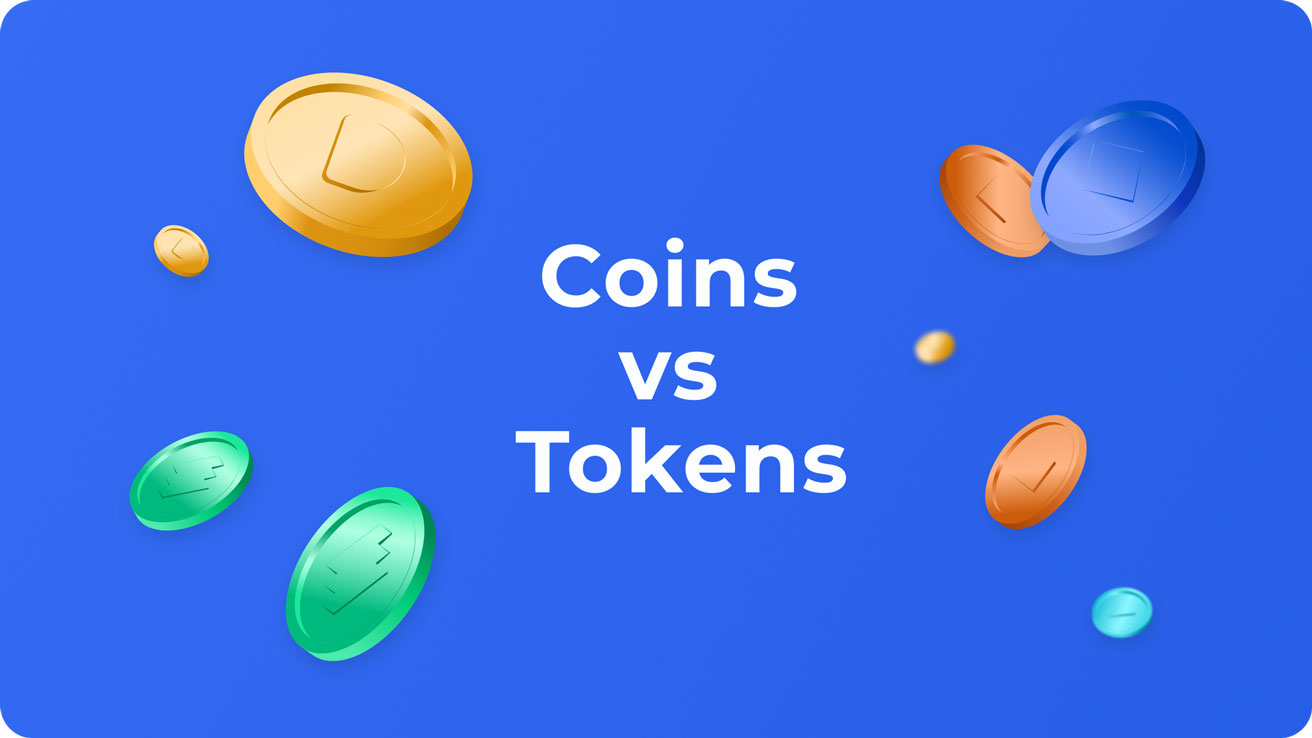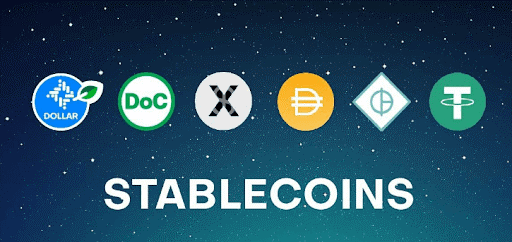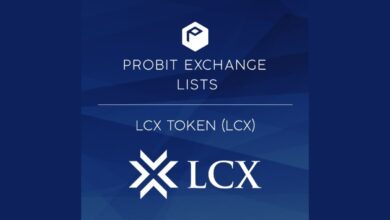What Is The Difference between Crypto Altcoins and Crypto Tokens?

Table of Contents
There are thousands of cryptocurrencies that serve different functions and sustain various blockchains, decentralized applications, and projects. Blockchain experts classify these digital assets to help users to understand how they work. The broad categories of cryptocurrencies are altcoins and tokens. This guide will cover these categories, their examples, and how to use them.
What is cryptocurrency?
A cryptocurrency is a type of digital asset that is also a currency, created using encryption algorithms. Basically, a cryptocurrency exists on the blockchain and is secured by cryptography. There is no central authority such as the government or bank that controls its use, thus it is decentralized.
Bitcoin, developed in 2009 by a person with the pseudonym Satoshi Nakamoto, was the first cryptocurrency. The aim of Nakamoto was to make it an alternative medium of exchange with no central control.
What are altcoins?
Alternative coins (Altcoins) are all cryptocurrencies apart from Bitcoin (BTC). Bitcoin was launched as a virtual currency that competes with fiat money. Following its launch in 2009, many other coins came onto the market.

Examples of altcoins
By the end of December 2022, CoinMarketCap showed that there were 22,157 cryptocurrencies. For now, there are more than a thousand cryptocurrencies that can be traded on cryptocurrency exchanges. Such as Gate.io cryptocurrency exchange, where investors can trade 1400+ cryptocurrencies.
The number one altcoin by market capitalization is Ether (ETH), with a circulating supply of 122,373,866. The other top cryptocurrencies include BNB, Tether USDT, USD Coin, XRP, Binance USD, Dogecoin, Cardano, and Polygon (Matic).
Most developers created altcoins to improve the functionalities and framework of Bitcoin. For instance, most altcoins support decentralized applications and other DeFi products. A case in point is that of ETH which supports many decentralized applications (dApps).
In addition, people can use altcoins to make payments for goods and services. Many web-based businesses now accept cryptocurrencies as means of payment. Also, most of these businesses accept ETH as a medium of exchange. All payments using cryptocurrencies are recorded on the public ledger (Blockchain).
Types of altcoins
There are different types of altcoins, depending on the functions they save. Stablecoins, utility tokens, security tokens, and meme coins are examples of altcoins.
Stablecoins:
These are cryptocurrencies whose values are pegged against those of other assets or commodities. Usually, their prices are tied to the values of assets with low volatility. Most Stablecoins are pegged against fiat currencies such as the United States dollar. However, some Stablecoins are pegged against valuable commodities such as gold and crude oil. Tether USDT, USD Coin, and Binance USD are examples of Stablecoins.

Utility tokens:
These are cryptocurrencies created to support the functions of specific blockchains. In other words, people use them to purchase products and services of a certain blockchain. They also used them to pay transaction fees on the networks they are built on. Basic Attention Token (BAT), Filecoin, and Funfair (FUN) are examples of utility tokens.
Governance tokens:
These are cryptocurrencies that give their holders the right to make developmental proposals and vote on suggested improvement plans. Usually, the voting powers are proportional to the number of tokens each user owns.
The votes of individuals with more tokens have higher weights than those with fewer tokens. Maker (MKR) and Uniswap protocol token (UNI) are examples of governance tokens.
meme coins:
These are tokens whose values are often driven by social media hype and online community buzz. It is important to note that these coins are mostly used for speculative purposes since their values are very volatile. Dogecoin and Shiba Inu are the main examples of meme coins.

Security tokens:
These are tokens issued by companies that give their holders a fractional stake in the project. They are equivalent to bonds and stocks in the traditional financial sector.
The developers of these cryptocurrencies aim to sell them to raise capital for their businesses or crypto projects. Also, these tokens may represent some off-the-chain or real-world assets such as payable invoices and equipment.
Transactional tokens:
These are tokens used as a medium of exchange. As such, their main purpose is to facilitate the buying and selling of goods and services. Therefore, they operate like fiat currencies, but they have more utility than money.
Advantages of altcoins
Now that we have explained what altcoins are and their types, let’s focus on their advantages. This also briefly covers what altcoins are used for.
- The first advantage is that you have many altcoins to choose from depending on your preferences. Currently, there are over 20, 000 altcoins to choose from which include Binance Coin, ETH, Cardano (ADA), Matic, DAI, TRON (TRX), Polkadot (DOT), and Uniswap (UNI). In fact, the list of altcoins is very long.
- Some altcoins enable users to hedge against price volatility and inflation. This is particularly true with Stablecoins. Crypto users can select among many Stablecoins available on the market. Apart from maintaining the value of your cryptocurrencies by owning Stablecoins, you can also invest in them by lending them to other users and earning interest in return.
- Investors can hold altcoins for long periods as they anticipate their prices to rise. If their prices rise, the speculators earn profit. The diversity of altcoins helps investors to choose those with the best fundamentals and utility.
- Most altcoins have more utility than Bitcoin. This is because people mostly use BTC for speculative purposes and as a means of payment. However, most of the altcoin coins are utility tokens that people use to buy products that dApps offer.
- Most tokens have lower transaction fees than Bitcoin. This is because they use the proof-of-stake (PoS) consensus mechanism rather than the proof-of-work one which Bitcoin uses.
What are tokens?
It is worth noting that all cryptocurrencies exist on the blockchain and they have their own networks. In this sense, a blockchain is a platform or protocol that keeps data that is impossible to alter, falsify or replicate. Stated differently, a blockchain is a connection of multiple computer systems, also called nodes.
The cryptocurrencies that are developed on non-native blockchains are called tokens. In other words, a token does not have its own blockchain but exists on a network that has its own native cryptocurrency. For example, ETH is a native coin of the Ethereum blockchain. However, there are many other tokens that exist on the Ethereum network such as Uniswap (UNI) and Tether USDT.
The main purpose of tokens is to facilitate transactions on the blockchains they exist on. Some of these are used to pay for transaction costs. As such, they help to power many decentralized applications which offer various services and products. Some platforms use tokens to reward their community members as well as act as a means of payment.
In addition, most tokens are important in securing the blockchain networks they exist on. Specifically, staked tokens help to secure the network from malicious actions such as hacking.
Types of tokens
There are several types of tokens which include utility tokens, transaction tokens, security tokens, fan tokens, and meme coins. Most of these have already been explained above.
How do tokens work?
Since crypto tokens are cryptocurrencies, people can buy, hold and transfer them on the blockchain. They also serve various functions such as being a medium of exchange and investment assets.
As you know, tokens are intangible digital assets. Since we cannot physically hold them they are transferred from one wallet to another. When you send the tokens to another account, they leave your wallet. The proof of a transaction is recorded on the blockchain in the form of a transaction id.
These tokens have different standards. For example, on the Ethereum blockchain, they exist as ERC-20 and ERC-721 and they serve different purposes. As an instance, the ERC-721 facilitates the operation of non-fungible tokens.
Applications of tokens
We have already covered the differences between coins and tokens. Of which the main difference is that coins exist on their native blockchains while tokens are created on another blockchain. This means that tokens do not have their own blockchain; they share the networks with coins.
We can use tokens on crypto exchanges where we can trade them. With some decentralized applications, community members earn tokens as loyalty rewards or airdrops. In some cases, token holders participate in decision-making through voting or suggesting improvement proposals.
Conclusion
Altcoins and tokens are the major types of cryptocurrencies. After the launch of Bitcoin many other cryptocurrencies, called altcoins, were created. Currently, there are over 20,000 cryptocurrencies that serve different purposes such as medium of exchange. ETH, Tether USDT, Binance Coin, and Cardano(ADA) are some of the major altcoins.



